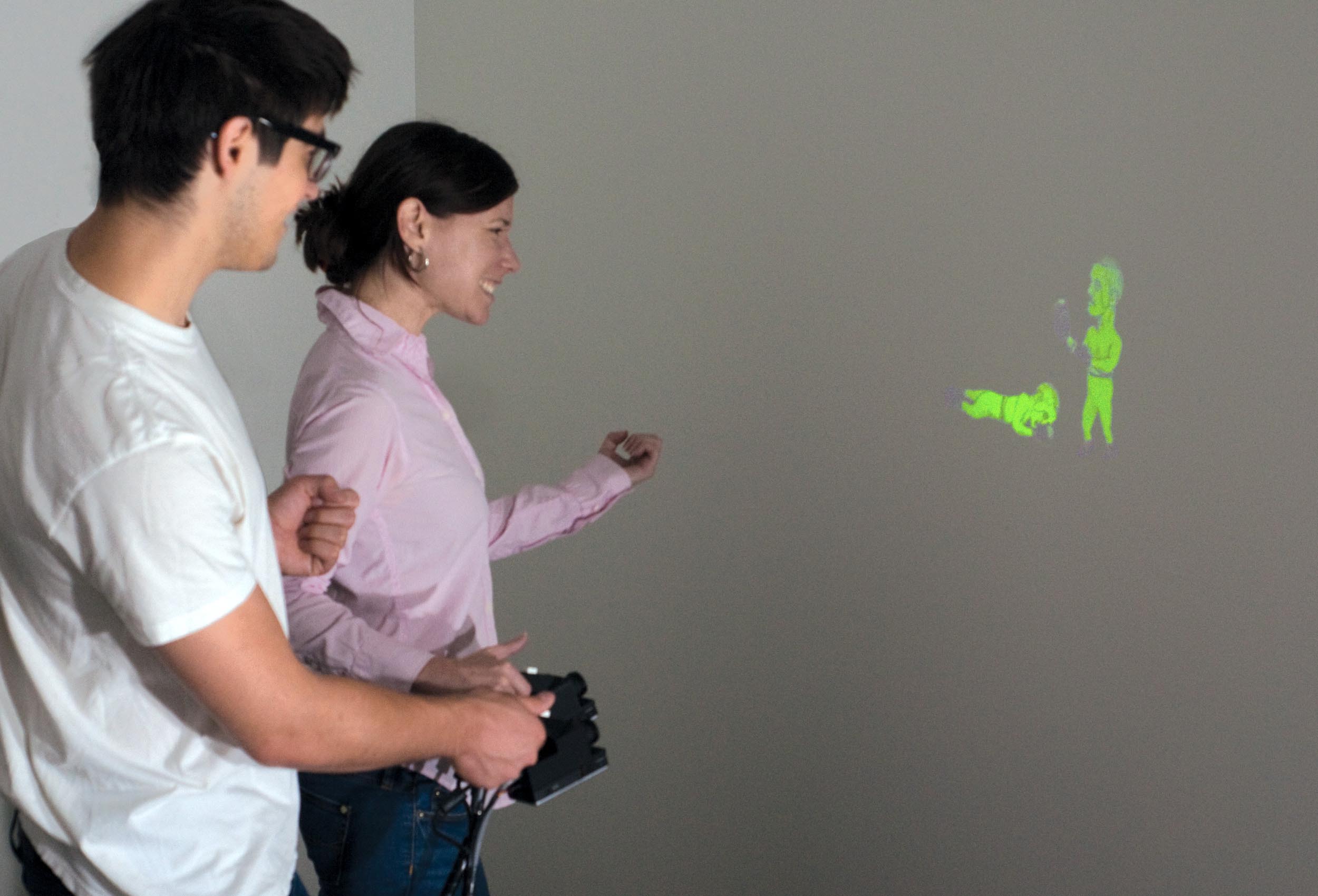SideBySide Projection System EnablesProjected Interaction Between Mobile Devices
Byron SpiceWednesday, October 19, 2011Print this page.

Disney, CarnegieMellon Researchers Develop New Type of Interaction
PITTSBURGH-Researchers at DisneyResearch, Pittsburgh, and Carnegie Mellon University have devised a systemcalled SideBySide that enables animated images from two separate handheldprojectors to interact with each other on the same surface.
The system, suitable for games,education and a variety of other applications, is self-contained in specialhandheld devices. No external cameras or other sensors are required, whichenables people to use the projectors to interact with each other anywhere andat anytime. SideBySide also can be used to exchange contact information, oreven share data files. The technology can spur a more participatory andintimate style of interaction than is possible with computers or overheadprojectors.
"Smartphones have made it possiblefor us to communicate, play games and retrieve information from the Webwherever we might be, but our interaction with the devices remains a largelysolitary, single user experience," said Karl D.D. Willis, a Ph.D. candidate incomputational design at Carnegie Mellon and a lab associate at Disney Research."Now that handheld projectors have become a reality, we finally have atechnology that allows us to create a new way for people to interact in thereal world."
The handheld projectors are hybriddevices that emit both visible and infrared light and contain a camera formonitoring the projected images, a ranging sensor and an inertial measurementunit.
The infrared channel plays a keyrole in enabling interaction. It is used to project markers that help thesystem recognize when the images are moving or overlapping and to communicateinformation between the devices.
The researchers have developed anumber of applications to demonstrate the capabilities of the technology. Gamesinclude Boxing, in which matches are performed without a ring; Cannon, in whichplayers knock a stack of bricks off a platform by firing a cannon ball from onescreen to another; and Gorilla, in which one player uses a plane and a net tocatch the other player's gorilla. They also have developed a 3D viewer, whichallows two users to control and explore a 3D model together, and applicationsfor exchanging contact information and transferring files. A question & answerapplication can be used to teach basic vocabulary to young children.
A video demonstrating SideBySidecan be viewed at http://www.disneyresearch.com/research/projects/hci_sidebyside_drp.htm
Willis will discuss SideBySide onWednesday, Oct. 19 at the Association for Computing Machinery's Symposium onUser Interface Software and Technology (UIST) in Santa Barbara, Calif. Conferenceorganizers already have presented SideBySide with UIST's best paper and bestdemonstration awards. In addition to Willis, the SideBySide development team includedIvan Poupyrev and Moshe Mahler of Disney Research and Scott Hudson, professorin Carnegie Mellon's Human-Computer Interaction Institute.
"
Byron Spice | 412-268-9068 | bspice@cs.cmu.edu
